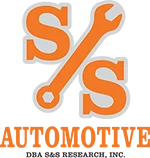1. Slow down and watch your speed. The EPA suggests that driving at 55mph instead of 65mph can result in a 10-15% increase in fuel efficiency. Driving 20 miles at 55 instead of 65 will only take you an extra 3 minutes. Use cruise control when possible.
2. Coast to a Stop. Brakes are a necessary part of your vehicles, but they’re also one of your biggest fuel wasters. You’ve invested fuel to get up to speed and by using your brakes, you’re manually forcing a loss of kinetic energy. If you anticipate lights and coast to a stop instead of applying the gas then the brake, you’ll consume fuel more efficiently.
3. Avoid slowly accelerating up to speed. This defies traditional logic, but cars actually use more fuel in lower gears. By (reasonably) accelerating to your desired speed – about 15 seconds to reach 50mph—you’ll improve your fuel economy.
4. Close the windows and use the A/C at high speeds. If you’re traveling at more than 55mph the aerodynamic drag caused by the opened windows is less fuel efficient than turning on the A/C.
5. Be choosy about when you use the A/C. Yes, it gets hot out. Sometimes it gets very hot out, but if you windows are up, you’ve essentially created an enclosed environment. Use your A/C only until you reach a comfortable temperature and then turn it off. Once you’ve reached your destination, park in the shade to keep your car cool.
6. When coasting downhill, leave the car in gear. Again, this defies conventional logic, but your car is actually designed to not consume fuel while coasting downhill. Most fuel-injected engines today use computer-controlled Deceleration Fuel Cut Off. Your vehicle’s injectors shut off automatically, and the car’s rotating tires keep the engine turning and the accessories running. Plus, coasting downhill in neutral is actually illegal in most states.
7. Check your tire pressure. Vehicles with under inflated tires become less fuel efficient. Your tires will naturally lose 1-1.5 pounds of pressure per month. Taking action to replace lost pressure will increase your fuel efficiency and longevity of your tires. If you’re unsure about your tire pressure or worried about your tread, find your nearest Waukesha Tires center.
8. Keep up on your tune ups and alignment. Just like you, your car needs a checkup every now and then to keep in the best health possible. Proper alignment assures your tires set properly and giving you’re the best gas mileage. A trained https://plus.google.com/110692362608461514915/about?gl=US&hl=en-US “>Auto Repair Specialist in the Waukesha area can perform any necessary maintenance and detect minor malfunctions before they turn into big problems.
9. Travel light. Just went to the store for a 50lb bag of kitty litter? Take it out of the car before you head off to your next time.
10. Plan your trips ahead. Maybe grab that kitty litter on the last stop of the trip or group your errands into vicinities rather than days. This is saves money and your sanity from multiple trips.
11. Change your oil. Clean oil properly lubricates your engine and reduces friction. Find your nearest ASE certified Waukesha Oil Change location to schedule an oil change.
Big improvements come in little steps. These recommendations are minor tricks and tips that can add up to extra money in your pocket and more fun in your summer.
S&S Automotive Incorporated
W305 S4990 Highway 83, Mukwonago, WI 53149 (VIEW MAP)

 MENU
MENU